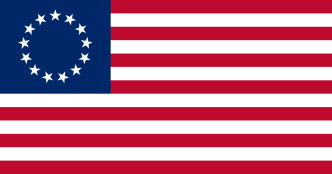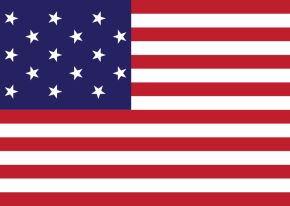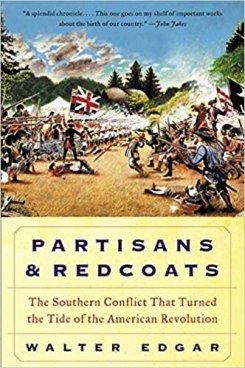As our great nation again celebrates its birth this July 4th, this week’s blog focuses on the history of its most recognizable symbol—our flag. Where did we get our red, white, and blue color scheme from? What inspired the design? Below is a simple overview of the origins of the American flag.
It all starts with the British Red Ensign. This flag began life as a civil ensign, flown by British merchant ships. Red ensigns had been used as early as the 1600s, but upon the formal union of England and Scotland in 1707, the English flag (featuring a red and white St. George’s Cross) and the Scottish flag (featuring a blue and white St. Andrews Cross) were combined and inserted as a canton on the ensign. Queen Anne (1665-1714) of Britain proclaimed this new banner to be the official flag of the British navy and Britain’s overseas colonies. Hence, the Red Ensign was British flag flown in the thirteen colonies.

During the Revolutionary War, Americans devised a wide variety of symbols to represent themselves, a large majority meant to serve a particular colony or military unit. As the Second Continental Congress operated a national government for the thirteen colonies in rebellion of the British government, overseeing both civil authority and an army and a navy, there was a growing need to develop a national flag. What became known as the “Continental Colors” came to serve the purpose. While all of the details behind its creation are not known, this flag is believed to have first flown on a warship at Philadelphia in 1775, and by 1777 had gained somewhat widespread usage as a de facto national banner among the Continental Army and Navy. The flag is essentially a Red Ensign with white stripes sewn onto the field to create thirteen alternating white and red stripes symbolizing the colonies united in rebellion.

The basic design stuck as the template for the American flag, but its similarity to the British flag of the colonies led to multiple variants substituting stars in the canton as a more distinctly “American” flag. Most of these flags had thirteen stars, representing the thirteen allied colonies. There were no standard regulations on how the stars were to be arranged, however. Betsy Ross of Philadelphia is widely credited with creating the flag arranging the stars in a circle in 1776, even though documentation confirming all of the details about the design’s first appearance are debated by historians. This flag came to be very popular both at the time and in America in ensuing years as a symbol of patriotism.

In the years after the conclusion of the Revolutionary War, it became customary to add a new star to the canton of the flag whenever a new state was added to the union. Exactly how these stars were to be arranged remained to be officially defined. Circular or star-shaped arrangements of the stars were common until the 1890s, when placing the growing number of stars in rows became standard.
The “Star-Spangled Banner” was the flag that flew over Fort McHenry in Baltimore when Francis Scott Key wrote our national anthem. It is the only official U.S. flag to feature more than thirteen red and white stripes—it has fifteen, corresponding with the number of stars for the states in the union at the time.

A 34-star U.S. flag from 1861

The flag of the United States 1960-present

JMB




